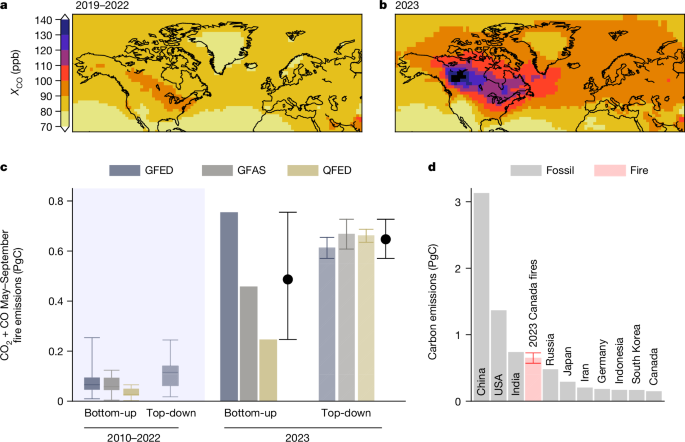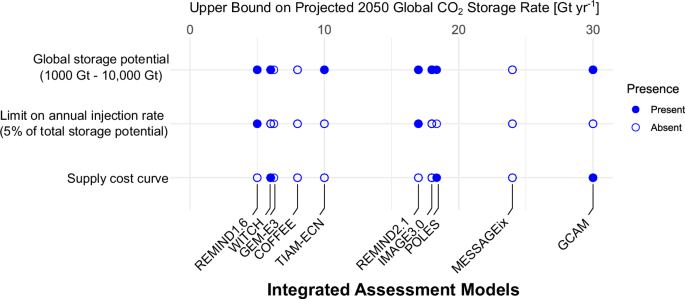2024-08-28 NASA
<関連情報>
- https://www.nasa.gov/earth/new-nasa-study-tallies-carbon-emissions-from-massive-canadian-fires/
- https://www.nature.com/articles/s41586-024-07878-z
2023年カナダの山火事による炭素排出量 Carbon emissions from the 2023 Canadian wildfires
Brendan Byrne,Junjie Liu,Kevin W. Bowman,Madeleine Pascolini-Campbell,Abhishek Chatterjee,Sudhanshu Pandey,Kazuyuki Miyazaki,Guido R. van der Werf,Debra Wunch,Paul O. Wennberg,Coleen M. Roehl & Saptarshi Sinha
Nature Published:28 August 2024
DOI:https://doi.org/10.1038/s41586-024-07878-z

Abstract
The 2023 Canadian forest fires have been extreme in scale and intensity with more than seven times the average annual area burned compared to the previous four decades1. Here, we quantify the carbon emissions from these fires from May to September 2023 on the basis of inverse modelling of satellite carbon monoxide observations. We find that the magnitude of the carbon emissions is 647 TgC (570–727 TgC), comparable to the annual fossil fuel emissions of large nations, with only India, China and the USA releasing more carbon per year2. We find that widespread hot–dry weather was a principal driver of fire spread, with 2023 being the warmest and driest year since at least 19803. Although temperatures were extreme relative to the historical record, climate projections indicate that these temperatures are likely to be typical during the 2050s, even under a moderate climate mitigation scenario (shared socioeconomic pathway, SSP 2–4.5)4. Such conditions are likely to drive increased fire activity and suppress carbon uptake by Canadian forests, adding to concerns about the long-term durability of these forests as a carbon sink5,6,7,8.



